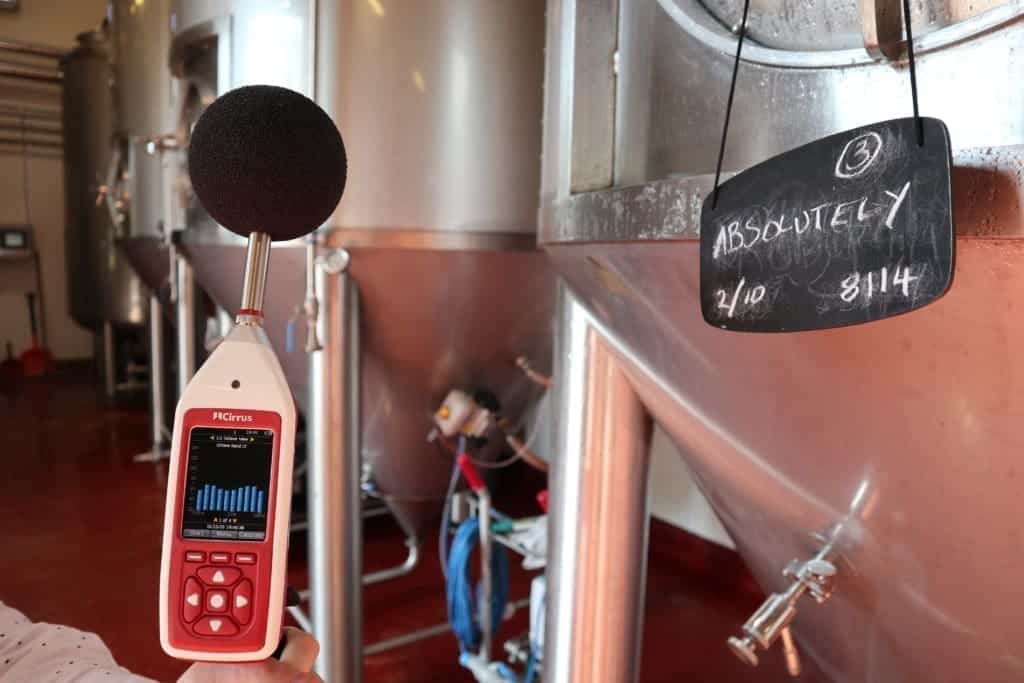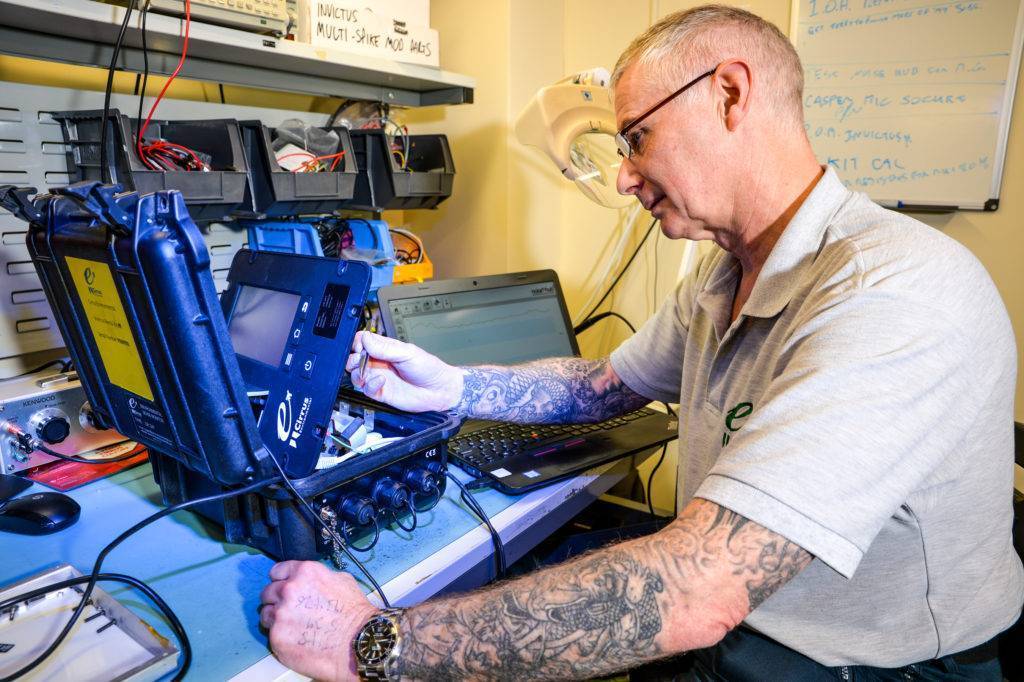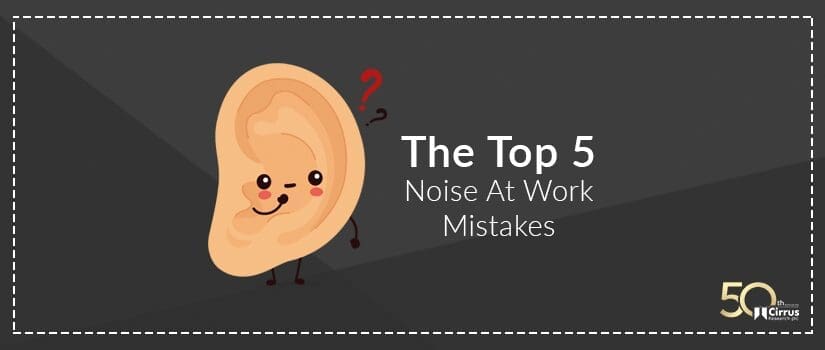Noise in the workplace poses significant risks to people’s hearing. Without the right tools and equipment to understand the noise levels in your organisation, you could be leaving employees open to suffering from hearing loss. Here are five of the most common mistakes employers make when it comes to noise in the workplace.
1) Not taking noise seriously
Every employer, regardless of the industry or sector, is bound by Health & Safety legislation and regulations. The UK Control of Noise at Work Regulations 2005 set out what employers have to do to protect their workforce from the dangers that exposure to excessive noise levels presents, and are legally enforceable.
85dB(A) is the level at which hearing protection is required by law. It may seem as though 85 decibels is quite a lot, but when you consider that it’s the same noise level as a petrol-powered lawnmower, it quickly becomes apparent just how prevalent the risk of noise is. At 85 decibels, you only have 8 hours’ worth of exposure before permanent damage is done to your hearing. To provide a bit more context, those who work in the emergency services are potentially exposed to 120 decibels when sirens are sounding. The maximum exposure time at 120 decibels is nine seconds.
The regulations state that measures must in place to control and reduce the amount of noise someone experiences throughout their working day. You might be thinking: “how am I supposed to know what the noise levels are?” Thankfully, Cirrus Research provides easy-to-use instruments that will help you identify where people are most at risk, allowing you to put measures in place to reduce the risk of someone suffering an injury at work.
Using a sound level meter to carry out an initial investigation of your workplace is a great way to determine whether or not you need to measure the noise more regularly, and can help you decide what, if any, action you need to take.
How can Cirrus help?
We offer a range of options to suit all budgets. You can purchase our industry-leading acoustic equipment from our no-pressure sales team. They’ll advise you as to the best solution for your needs, never selling you more than you need.
2) Not using the right instruments
You might be aware of your obligations under Health & Safety law but might not want to invest in scientific acoustic measurement equipment. When there are so many options available on websites like Amazon and even mobile phone apps, why would you look to make a more substantial investment? The answer is simple.

Using a sound level meter like the Optimus+ is essential in order to understand the noise levels in your workplace. Octave band data (pictured), along with Cirrus’ free data analysis software, can help you choose the most effective PPE to provide your staff.
The legislation also dictates that for measurements to be considered compliant with the law, the instruments you use must meet a minimum standard. For example, UK legislation dictates that manufacturers must make sound level meters to meet IEC 61672 and that any microphone used to for occupational noise measurements must be, at a minimum, class 2.
Now, unless you’re an acoustician, you don’t need to worry about what those things mean only that the equipment you’re using ticks the boxes. So many of the cheaper options available from the Internet won’t be anywhere near meeting these standards and mobile phone apps certainly won’t. The investment in the right equipment may be more significant, but it will ensure that the data you’re capturing is accurate and reliable, and that will stand up to scrutiny in any legal case, should an employee make a complaint.
How can Cirrus help?
All equipment manufactured and supplied by Cirrus Research meets international standards and guidelines, meaning you can use it no matter where you are in the world, safe in the knowledge that your data is accurate, reliable and compliant. We can also help you decide what sort of equipment is best suited to your needs, whether it’s a sound level meter, noise dosimeters or a longer-term installation.
3) Not measuring noise correctly
Following on from ensuring you have the right sort of equipment, you need to make sure that you’re using it properly. Failure to do so will inevitably affect the data you’re capturing and could ultimately lead to you putting ineffective control measures in place, having no effect on the risk posed to your employees.
What sort of data do you need to capture? Which areas do you need to measure? How does the instrument need to be set up? How can you be sure you’ve measured correctly?
How can Cirrus help?
Cirrus Research offers a range of training programmes, from product-specific training to noise at work and environmental noise awareness courses. We want you to have all the knowledge at your disposal so that you’re completely confident and competent at protecting your people from the dangers of exposure to excessive noise. If ever you have any questions about your instruments or the best way to use them, our friendly in-house team are always happy to help on an ad-hoc basis.
Through Cirrus Solutions, you can also contact our team to arrange on-site training for you and your team.
4) Not calibrating your noise measurement instruments
We regularly have our car MOT’d and serviced to make sure that it’s safe and running as it should be, and also because it’s the law. The same applies to your acoustic equipment. The Control of Noise at Work Regulations 2005 state that for your data to be considered accurate and reliable, the instrument must be “field calibrated” before and after each measurement and “factory calibrated” at least every two years.

Our in-house calibration team can work on noise measurement equipment from any manufacturer.
Field calibrating ensures that your instrument accounts for any minor fluctuations in the microphone that happen naturally or could have been caused by damage. Factory calibration puts every feature and function of your equipment to the test against incredibly high standards, ensuring that any significant discrepancies are eradicated.
How can Cirrus help?
Cirrus Research offers two levels of factory calibration: standard-traceable and UKAS-accredited (lab number 10148). The level you decide to go for will depend on where you work, what internal guidelines you have to meet, and how rigorous you need the calibration process to be. Just as with the instruments themselves, there are several cheaper alternatives around, but you must be careful about which you choose. Many of these cheaper options merely perform a field calibration rather than a proper factory verification, which could leave you open to legal challenges should you ever have a complaint brought against you.
Here at Cirrus, we calibrate instruments from every manufacturer, so you don’t have to have our equipment to take advantage of our leading calibration service. We also make any necessary adjustments to your instruments should they fail calibration, so you’ll have them returned to you in full working order. If your equipment needs any repairs, we’ll do them wherever we can – all at no extra charge!
5) Not trying to control noise risks in the first place
Remember, even if you provide your staff with hearing protection, the risk is still present; simply providing PPE isn’t enough to ensure that you have adequately protected your team from the dangers that noise presents. Many employers offer inadequate hearing defenders, either under-protecting staff or over-protecting them. It may seem as though it’s difficult to have too much protection when it comes to hearing loss. Still, in the case that your team operate heavy machinery, over-protection could mean that they’re unable to hear safety alarms or their colleagues attracting their attention to potential danger. Hearing protection should always be a last resort.
As an employer, it’s your obligation under Health & Safety law, to put measures in place to control the risks that noise presents, preferably by reducing noise levels in the workplace. If that’s not possible, then every effort should be made to ensure that an individual’s exposure to noise is limited, using the maximum exposure limit rules.
How can Cirrus help?
If you’re unsure as to how best reduce the noise risks in your workplace, then one of our acoustic experts can arrange to visit your site and conduct an initial noise survey. They’ll be able to produce a preliminary report and offer guidance as to the next steps you need to take. Your report may contain advice like something as small as altering shift patterns for your staff, or something more sizeable as investing in quieter machinery.
Cirrus Research has been providing comprehensive noise solutions for clients across the world for 50 years. We can offer you everything you need to measure, monitor and control noise in the workplace and the environment. All you have to do is get in touch with a member of our team, and they’ll be more than happy to help. Let our expertise support yours.



